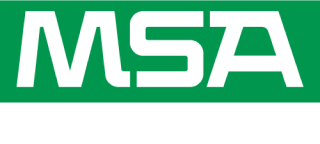
During the course of normal activities, cross-contamination can be a common concern for firefighters. Cross-contamination occurs when one person receives infectious materials such as respiratory secretions from another person by touching a contaminated surface or breathing contaminated air. Many fire departments are providing individual-issue facepieces to firefighters to mitigate cross-contamination from one user to another, however that alone does not provide complete protection against cross-contamination. Second stage regulators that are shared among individuals may also serve as a source for cross-contamination.
In order to reduce the potential for cross-contamination, MSA’s G1 Facepiece and G1 Second Stage Regulator were designed with the following features:
- The G1 Facepiece incorporates a separate ambient air port that is used for both inhalation and exhalation when the facepiece is worn without the second stage regulator connected.
- When the second stage regulator is connected, the ambient air port is sealed and separated by an O-ring. This O-ring seal prevents airflow supplied by the second stage regulator from contacting the ambient air port.
- The G1 facepiece utilizes an inhalation check valve when the second stage regulator is connected, while the exhalation valve diverts air outside of the facepiece. This design feature directs potentially contaminated exhaled air away from the second stage regulator.
To minimize the impact of SCBA use on these design features, users must follow all use, inspection and testing as well as maintenance schedules outlined in the G1 Operating Manual and subsequent CARE Manuals. Applicable sections within the G1 Operating Manual include: Visual Inspections, Functional Tests, Donning, During Use, Cold Weather Operations, After Use, and Recommendations for Cleaning and Disinfecting.
If you suspect that the G1 second stage regulator may have been exposed to COVID-19 while disconnected from the G1 facepiece, download and follow the PDF guide for MSA SCBA second stage regulator cleaning guidance based on CDC guidance for COVID-19.






